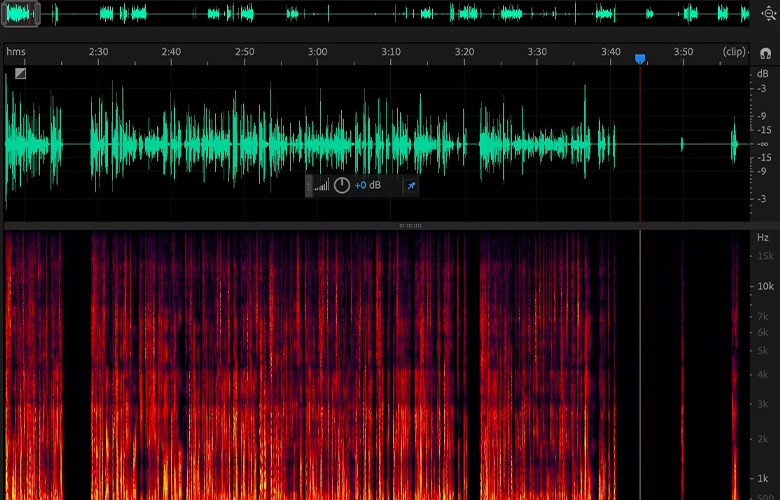
You may have heard the basic tips and tricks of podcast editing, or editing any kind of speech audio. Remove ‘ums’ and ‘ahhs’, breaths, mouth noises, pops and clicks, silences, etc. But sometimes we can take it too far and actually end up over-editing a podcast in pursuit of the perfect sound (tip number one: there’s no such thing as perfect). Here are three things I’ve learned which have helped me avoid doing just that.
Yes, they can be very distracting, particularly if there are too many of them. If they’re littered throughout a person’s speech and are of no value to what’s actually being said, go ahead and get rid of them. But I really think it’s okay to leave the occasional one in. Maybe the person in question speaks quite fast and it’s difficult to remove an ‘um’ without cutting into the next word. Maybe they’ve started an answer with an ‘um’ because they’re considering what they’re going to say, or they’re reacting in the moment to an unexpected question or statement. There can be various reasons, but if it isn’t excessive (as in every other word), there’s no harm in a couple of ‘ums’. Sometimes we have to make allowances for someone’s natural speech patterns.
You may have heard that this is the thing to do, but I personally would argue against it. Again, if someone is a really heavy breather and it’s a very distracting sound, by all means, remove it (or at least quieten it down a bit). But for the most part, it’s perfectly natural to hear someone take a breath while speaking, so much so that we usually don’t even notice it. So if it’s not overly noticeable, there’s no need to take it out. If you are removing a breath, just make sure you do it by reducing the dB rather than deleting it, or the edit might sound too sharp. It all comes back to the idea of trying not to mess too much with people’s natural speech patterns. You want your audio to sound as clean and polished as possible, but you also want your guests to sound like human beings and not robots.
Everyone has different editing styles, and those styles will suit different types of podcasts. Some may be more fast-paced, others more reflective. There is a tendency for some editors to take out every pause or every bit of silence, but decisions like this should be made based on the pace and style of the podcast. One of the most valuable pieces of advice I ever got from a tutor was that silence can be an incredibly important storytelling device. If you’re editing a particularly emotive or thought-provoking conversation, leaving in pauses gives the podcast more breathing room and allows time for the listener to really process what they’re hearing. So before you take silence away, always stop to consider what it might add.
8 Red Flags Artists Should Watch for Before Signing any Agreement


The mission of SoundGirls.org is to inspire and empower the next generation of women in audio. Our mission is to create a supportive community for women in audio and music production, providing the tools, knowledge, and support to further their careers. SoundGirls.Org was formed in 2013 by veteran live sound engineers Karrie Keyes and Michelle Sabolchick Pettinato and operates under the Fiscal Sponsorship of The California Women’s Music Festival, a 501(c)3 non-profit organization. In 2012, Karrie and Michelle participated in the “Women of Professional Concert Sound” panel at the AES Conference in San Francisco. The panel was hosted by the Women’s Audio Mission (WAM) and moderated by WAM founder Terri Winston. Terri brought together five women working in live and broadcast audio. The groundbreaking panel (which also included Jeri Palumbo, Claudia Engelhart and Deanne Franklin), provided young women and men a glimpse into life on the road, tips and advice, and a Q & A with the panelists. More importantly though, was how incredibly powerful the experience was for the panelists. We had all been in the business for 20 years or more, yet most of us had never met before that day and within minutes we bonded like long-lost sisters. We were struck by how similar our experiences, work ethics, and passions were and wondered why our paths had never crossed and how our careers would have been different had we been there to support each other through the years. Each of us are strong on our own, but together we were even stronger and a powerful force. We were empowered. Each of us had been asked hundreds of times in our careers: Are there other women doing sound? How did you get into sound? How would a young woman go about getting into sound? Through creating SoundGirls.Org, we hope to establish a place for women working in professional audio to come for support and advice, to share our success and failures, our joys and frustrations, and for empowerment and inspiration.
Read Full Profile© 2021 TheatreArtLife. All rights reserved.

Thank you so much for reading, but you have now reached your free article limit for this month.
Our contributors are currently writing more articles for you to enjoy.
To keep reading, all you have to do is become a subscriber and then you can read unlimited articles anytime.
Your investment will help us continue to ignite connections across the globe in live entertainment and build this community for industry professionals.